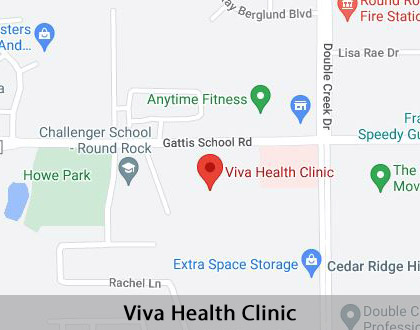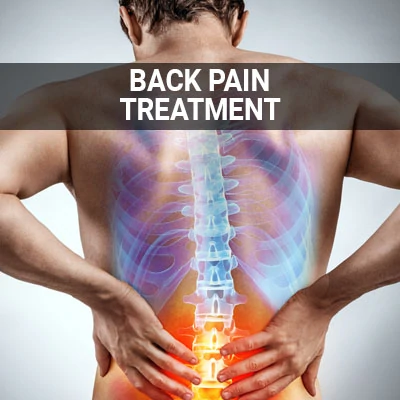Pain Management Round Rock, TX
For many patients, pain management is a necessary part of everyday life. Pain can make it challenging to carry out even the simplest of tasks. If you are dealing with pain that interferes with your day-to-day routine, pain management may be right for you.
Pain management is available at Viva Health Clinic in Round Rock and the surrounding area. There is never any reason to suffer unnecessarily. Call us today at (512) 243-5872 to schedule an appointment or learn more about our services.
Understanding Pain
Pain can be understood as any uncomfortable feeling that points to something going wrong. It may be described as aching, pinching, stabbing, steady, or throbbing, among many other descriptors. It ranges from mild to severe, and it may be associated with other physical symptoms. There are several different types of pain: acute, chronic, nociceptive, and neuropathic.
Acute Pain
Acute pain tends to be severe but short-lived and serves to signal injury. Contrary to the name seeming minor, certain types of acute pain can last anywhere from a few weeks to several months.
Chronic Pain
In contrast, chronic pain may exist on a spectrum of severity and will persist for long periods. It also often occurs due to a disease that may require ongoing treatment.
Nociceptive Pain
The most common type of pain is nociceptive pain, which is caused by the stimulation of nociceptors. Nociceptors are pain receptors for tissue injury and are present throughout the body, especially the skin and internal organs. Like acute pain, they send electrical signals to the brain whenever they are stimulated by potential harm. However, nociceptive pain can be either acute or chronic.
Neuropathic Pain
Less common is neuropathic pain, which occurs due to a dysfunction of or damage to the nervous system. These dysfunctional or damaged nerves misfire pain signals then fire pain signals for no apparent reason. Neuropathic pain is often chronic, but it can sometimes go away on its own.
“There are several different types of pain: acute, chronic, nociceptive, and neuropathic.”
What is Pain Management?
Pain management, also known as pain medicine, is a specialty branch of medicine that uses evidence-based practices to reduce pain. It can encompass virtually any health condition that causes pain. The process can be simple or complex, depending on the condition being treated. For example, a herniated disc will typically require a simple epidural injection and physical therapy.
However, if this is insufficient, we may employ other skills and techniques as necessary. In some cases, patients may also benefit from other alternative therapies, chiropractic therapy, interventional procedures, medication management, physical therapy, psychological counseling and support, or referral to other medical specialists.
Patients should also keep in mind that we will treat the pain according to its duration, history, aggravating and relieving factors, and any causal structures. Any structure that causes pain must have a nerve supply and be vulnerable to injury, and the patient must feel pain when said structure is stimulated. We can help identify the exact source of pain and determine the best treatment for the patient.
“ain management, also known as pain medicine, is a specialty branch of medicine that uses evidence-based practices to reduce pain.”
Who Pain Management Doctors Are
Doctors who provide pain management and treatment are practitioners who have undergone special training to evaluate, diagnose, and treat all different types of pain. Pain is a broad spectrum of disorders, some of which can coexist simultaneously. It may also be derived from various causes or pop up without any evident reason.
As the field of medicine continues to evolve, professionals also continue to learn more about the various complexities of pain. As such, the need for practitioners who provide pain management only continues to grow. Their advanced training and knowledge on the physiology of pain, the ability to evaluate patients with complex pain issues, and their understanding of how to utilize specialized tests in diagnosis make them invaluable. They can also accurately prescribe medications to treat various pain problems and have the necessary skills to perform multiple pain-relieving procedures.
Pain management is a quickly growing field with an increasing number of intricacies. With every year comes new and complex medications, techniques, and technologies. Our team can also play an instrumental role in coordinating additional care with physical therapists, psychotherapists, and rehabilitation programs.
“Doctors who provide pain management and treatment are practitioners who have undergone special training to evaluate, diagnose, and treat all different types of pain.”
Check out what others are saying about our primary care practitioner services on Yelp: Pain Management in Round Rock, TX
Questions Answered on This Page
Q. What are the types of pain?
Q. Who are pain management practitioners?
People Also Ask
Q. What is a minor head injury??
Frequently Asked Questions
Q. What type of training do you need to become a pain management practitioner?
A. Doctors who provide pain management treatment must earn a college degree and complete four years of medical school. They must then spend four additional years completing a residency in anesthesiology. Some may also choose to receive an additional year of fellowship training to become subspecialists in treating pain.
Q. What can I expect when I see a pain management practitioner?
A. In some ways, your first visit to a pain management practitioner will be similar to your first visit to a primary care practitioner. Your practitioner will examine your medical history, and you will undergo a thorough physical exam. The practitioner may also order additional tests, such as blood tests or radiographic images. You may need to undergo more tests if you have chronic pain. Then, the practitioner will draw up the best treatment plan for your unique needs.
Q. Why is my pain better or worse some days?
A. It is hard to answer this question without a thorough evaluation. However, if you notice that certain activities aggravate your pain, medication may be able to help. A one-on-one consultation will give you the answers you are looking for.
Q. Can acute pain turn into chronic pain?
A. Yes. If not appropriately treated, acute pain can be prolonged. Chronic pain is any pain that lasts longer than three months.
Q. When should I seek out pain management?
A. Seek out medical attention if you have any pain that interferes with your day-to-day activities or if your pain lasts for three months or longer. Otherwise, you run the risk of exacerbating your condition.
Start Feeling Better – Visit Us Today
By visiting us as soon as possible, our team can help get you the professional treatment you need. Instead of waiting around and allowing the symptoms to get worse, we can provide you with treatment options.
Definition of Medical Terminology
Call Us Today
Pain management can make everyday life easier to navigate. We at Viva Health Clinic can help. Call us today at 512-243-5872 to schedule an appointment or learn more about our services.
Helpful Related Links
- American Journal of Medicine. American Journal of Medicine. 2023
- American Medical Association (AMA). American Medical Association (AMA). 2023
- American Society of Addiction Medicine. American Society of Addiction Medicine. 2023
- Substance Abuse and Mental Health Services Administration. Substance Abuse and Mental Health Services Administration. 2023
About our business and website security
- Viva Health Clinic was established in 2023.
- We accept the following payment methods: American Express, Cash, Discover, MasterCard, and Visa
- We serve patients from the following counties: Williamson, Travis, McLennan
- We serve patients from the following cities: Pflugerville, Austin, Kyle, Waco, Leander, Cedar Park, Bastrop, Round Rock, Georgetown, Hutto, Liberty Hill, and Taylor
- National Provider Identifier Database (1104428416). View NPI Registry Information
- Norton Safe Web. View Details
- Trend Micro Site Safety Center. View Details
Back to top of Pain Management










